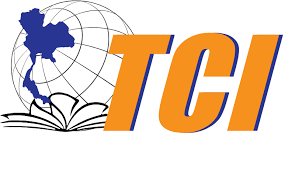The การพยากรณ์ทางสถิติของจำนวนผู้ติดเชื้อไวรัสโควิด-19 ในประเทศไทย
คำสำคัญ:
โควิด-19, ตัวแบบค่าเฉลี่ยคงที่ระยะยาว, การพยากรณ์แบบปรับได้, ตัวแบบค่าเฉลี่ยคงที่ระยะสั้น, Box – Jenkinsบทคัดย่อ
การวิจัยเรื่อง การพยากรณ์ทางสถิติของจำนวนผู้ติดเชื้อไวรัสโควิด-19 ในประเทศไทย มีวัตถุประสงค์การวิจัยเพื่อเปรียบเทียบวิธีการพยากรณ์ 4 เทคนิค ได้แก่ ตัวแบบค่าเฉลี่ยคงที่ระยะยาว ตัวแบบค่าเฉลี่ยคงที่ระยะสั้นการพยากรณ์แบบปรับได้ และ Box – Jenkins และทำการศึกษาความคลาดเคลื่อนที่เกิดจากการพยากรณ์โดยใช้เกณฑ์ MAD MSE และ MAPE ในการเลือกวิธีการพยากรณ์ที่เหมาะสม การวิจัยในครั้งนี้ใช้ข้อมูลจำนวนผู้ติดเชื้อไวรัสโควิด-19 จากการรายงานของศูนย์บริหารสถานการณ์โควิด-19 (ศบค.) ระหว่างวันที่ 1 เมษายน 2564 - 31 ตุลาคม 2564 เป็นเวลา 7 เดือน (214 วัน) เพื่อพยากรณ์ทางสถิติของจำนวนผู้ติดเชื้อไวรัสโควิด-19 ในประเทศไทย ผลการวิจัยพบว่าจำนวนผู้ติดเชื้อไวรัสโควิด-19 ในประเทศไทยมีค่าต่ำสุดในเดือนเมษายน เท่ากับ 26 คน และมีค่าสูงสุดในเดือนสิงหาคม เท่ากับ 23,418 คน โดยจำนวนผู้ติดเชื้อไวรัสโควิด-19 ในประเทศไทยเฉลี่ย 7 เดือน เท่ากับ 8,802 คนการพยากรณ์ทางสถิติจำนวนผู้ติดเชื้อไวรัสโควิด-19 ในประเทศไทยที่มีค่า MAD, MSE และ MAPE น้อยที่สุด 3 อันดับแรก ได้แก่ การทำให้เรียบแบบเอกซ์โพเนนเชียลชั้นเดียว เมื่อค่าคงที่การทำให้เรียบ (a) เท่ากับ 0.1, 0.5 และวิธีค่าเฉลี่ยเคลื่อนที่ชั้นเดียว เมื่อจำนวนเทอม (n) เท่ากับ 2
เอกสารอ้างอิง
Areepong, Y. and Sunthornwat, R. 2021. Forecasting modeling of the number of cumulative COVID-19 cased with deaths and recoveries removal in Thailand. Science, Engineering and Health Studies 15: 21020004.
Auswawanlop, N. and Aeiumtrakul, K. 2021. The Mathematical Model to forecast of COVID-19 Pandemic. Available Source: https://thaipublica.org/2021/05/epidemic-sir-model/, November 28, 2021. (in Thai)
Faculty of Medicine Siriraj Hospital. 2021. What is COVID-19? Available Source: https://www.gj.mahidol.ac.th/main/covid19/covid19is/,
October 25, 2021. (in Thai)
Ingpansatawong, S. 2012. Statistical Forecasting Techniques. Khon Kaen University Press, Khon Kaen. (in Thai)
Lorjirashunkul, W. and Jittawej, J. 2005. Forecasting Techniques. National Institute of Development Administration, Bangkok. (in Thai)
Ministry of Public Health. 2021. Coronavirus disease 2019 (COVID-19). Available Source: https://www.who.int/ docs/default-source/searo/thailand/2020-03-26-tha-sitrep-33-covid19-th-final.pdf?sfvrsn=8f5738e_0, October 25, 2021. (in Thai)
Nuanchui, T. 2021. COVID-19 cumulative case forecasting by Deep Learning. Master Thesis of Science, Chulalongkorn University.
Panichayakul, T. 2020. Forecasting of COVID-19 Infected People Using Principles of Statistics. Available Source: https: //www.sci.psu.ac.th/news/2020/04/coronavirus-prophecy-via-statistical-principles/, October 25, 2021. (in Thai)
Sinsomboothong, S. 2016. Data Analysis using MINITAB for Windows. Chamchuri Product, Bangkok. (in Thai)
Vorathamthongdee, S. and Congstitvatana, P. 2023. Predictive Analysis of COVID-19 Patients in Thailand using Multiple Countries Data. ECTI Transaction on Application Research and Development 3(1): 248647.
Wongsathan, R. 2021. Real-time Prediction of the COVID-19 Epidemic in Thailand Using Simple Model – Free Method and Time Series Regression Model. Walailak Journal of Science and Technology 18(14): 10028.

ดาวน์โหลด
เผยแพร่แล้ว
รูปแบบการอ้างอิง
ฉบับ
ประเภทบทความ
สัญญาอนุญาต
ลิขสิทธิ์ (c) 2024 วารสารวิจัย มหาวิทยาลัยเทคโนโลยีราชมงคลศรีวิชัย

อนุญาตภายใต้เงื่อนไข Creative Commons Attribution-NonCommercial-NoDerivatives 4.0 International License.
เนื้อหาและข้อมูลในบทความที่ลงตีพิมพ์ในวารสารวิจัยมหาวิทยาลัยเทคโนโลยีราชมงคลศรีวิชัย ถือเป็นข้อคิดเห็นและความรับผิดชอบของผู้เขียนบทความโดยตรง ซึ่งกองบรรณาธิการวารสารไม่จำเป็น ต้องเห็นด้วย หรือร่วมรับผิดชอบใดๆ
บทความ ข้อมูล เนื้อหา รูปภาพฯลฯ ที่ได้รับการตีพิมพ์ในวารสารวิจัย มหาวิทยาลัยเทคโนโลยีราชมงคลศรีวิชัย ถือเป็นลิขสิทธ์ของวารสารวิจัย มหาวิทยาลัยเทคโนโลยีราชมงคลศรีวิชัย หากบุคคลหรือหน่วยงานใดต้องการนำทั้งหมดหรือส่วนหนึ่งส่วนใดไปเผยแพร่ต่อหรือเพื่อการกระทำการใดๆจะต้องได้รับอนุญาตเป็นลายลักษ์อักษรจากวารสาร มหาวิทยาลัยเทคโนโลยีราชมงคลศรีวิชัยก่อนเท่านั้น






